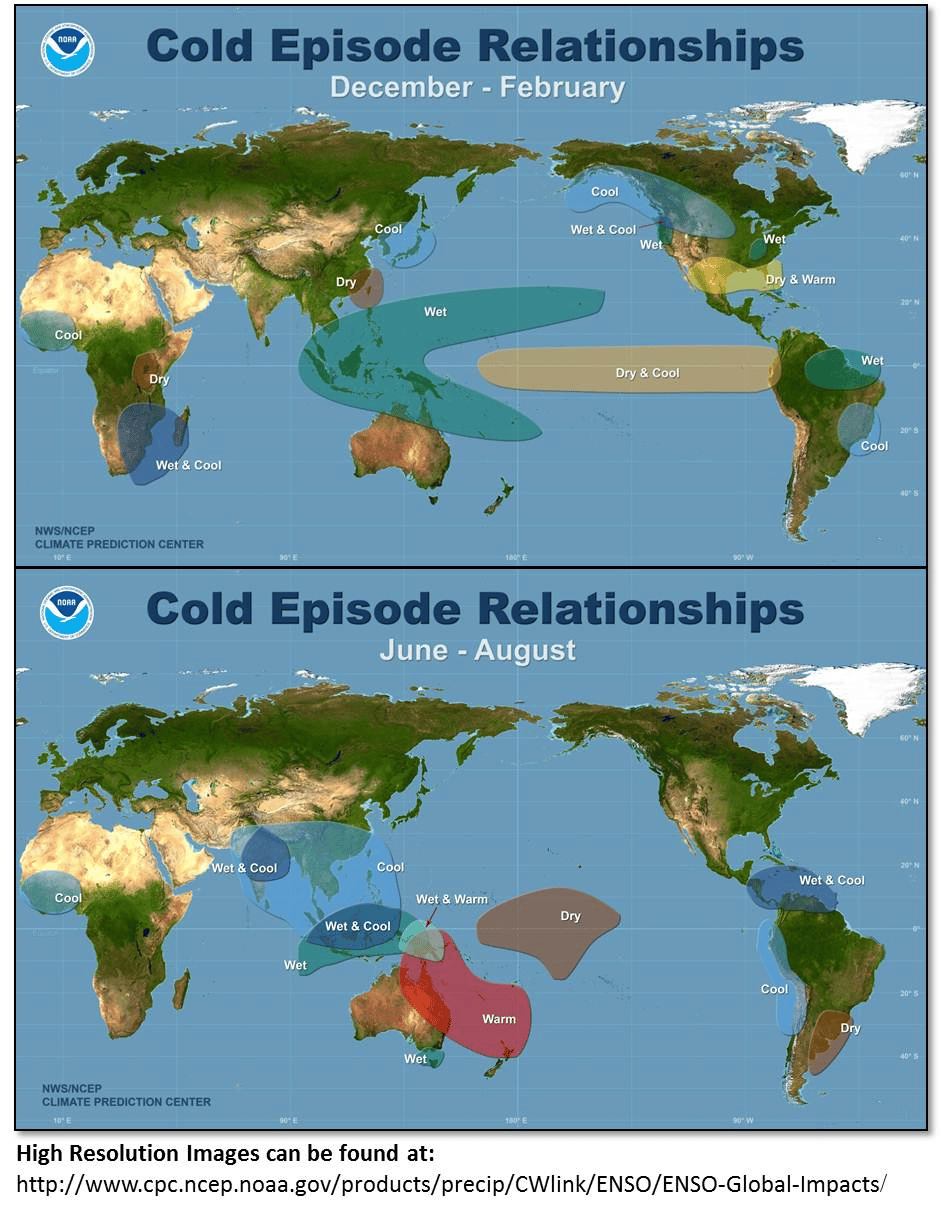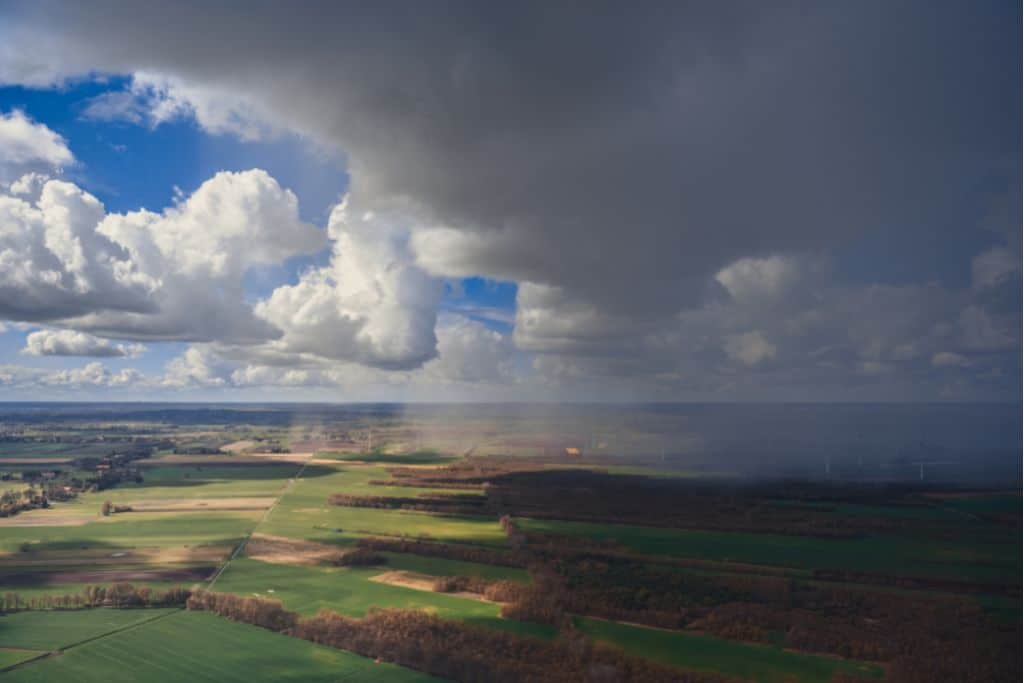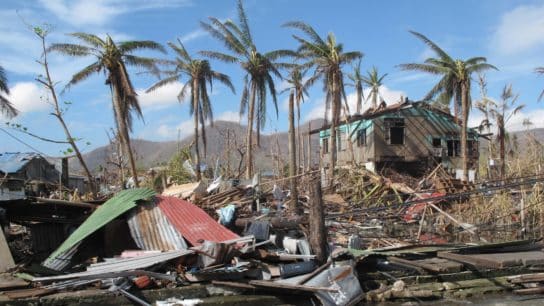The El Niño-Southern Oscillation (ENSO) circulates the weather we experience across Earth. As the global climate changes as a result of a human-triggered rise in greenhouse gas emissions, large weather systems like ENSO will be influenced and inevitably altered.
—
What Is the El Niño-Southern Oscillation?
The National Oceanic and Atmospheric Administration (NOAA), defines the El Niño-Southern Oscillation (ENSO) as “a periodic fluctuation (i.e., every 2–7 years) in sea surface temperature (El Niño) and the air pressure of the overlying atmosphere (Southern Oscillation) across the equatorial Pacific Ocean.” The presence of an El Niño, or its opposite – La Niña – “sufficiently modifies the general flow of the atmosphere to affect normal weather conditions in many parts of the world.”
ENSO oscillates between three phases: El Niño (warm phase), La Niña (cold phase), and a neutral phase. These phases bring warmer, cooler, wetter, and drier climates to regions across the planet. Additionally, these phases circulate across oceans and the atmosphere, resulting in air temperatures, sea surface temperatures, and precipitation to fluctuate from normal levels. El Niño and La Niña can last from nine to 12 months (sometimes up to years) and on average occur every two to seven years. Regions across the globe that feel the greatest effect from ENSO can be seen in the figures below.

Figure 1. El Niño globally influences weather and sea surface temperatures. This figure depicts how El Niño brings more or less rainfall and cooler or warmer temperatures depending on where you are located. Image by NOAA & National Weather Service.

Figure 2. La Niña globally influences weather and sea surface temperatures. This figure depicts how La Niña brings more or less rainfall and cooler or warmer temperatures depending on where you are located. Image by NOAA & National Weather Service.
You might also like: What are El Niño and La Niña?
How Will the El Niño-Southern Oscillation Change With A Changing Climate?
ENSO will be influenced by a changing climate depends on human- and industry-triggered greenhouse gas emissions. If we do not curb emissions globally, we are very likely to experience stronger and more frequent extreme weather events in the coming years.
A NOAA article discusses how the impacts of ENSO are likely to evolve in the coming decades:
1. Increase in frequency “from about one every 20 years to one every 10 years by the end of the 21st century under aggressive greenhouse gas emission scenarios.” This means that the increase in ENSO frequency events has potential for regions to see warmer-than-normal temperatures, colder-than-normal temperatures, floods, and drought. An example of this is Australia, which, as a result of La Niña’s increase in frequency, has experienced multiple flooding events in recent months.
2. Increased chances of drought will occur in India, Indonesia, Australia, and part of the Amazon during El Niño and in the southern portion of the United States during La Niña. Increasing the chances of drought in these regions can put water resources and agriculture at risk. Water resources are at risk of drought as increased evaporation with warmer temperatures and decreased precipitation will result in water storage to be depleted. Agriculture is at risk of drought due to warmer temperatures, an increase of evaporation from the soil, and decrease of water availability in the soil. This will reduce crop yields and food availability for livestock, leaving the food chain at risk.
3. Increased chances of floods will occur in Indonesia, Australia, and part of the Amazon during La Niña and in the southern portion of the United States during El Niño. Increasing the chances of floods in these regions can contaminate water sources as sewage systems and hazardous materials can mix with the floodwater, displace people from their homes, and cause fatalities.
4. Amplify pre-existing ENSO impacts such as coral bleaching, which is more prevalent when ENSO is in the El Niño phase. During the El Niño of 2015-2016, which lasted nine to 12 months, the central pacific coast of Mexico experienced an increase of tropical storm activity and sea surface temperatures. This caused a large amount of corals to be put under stress. When corals are stressed because of warmer-than-usual waters, they will expel the algae living in their tissue. Without the algae, corals turn completely white and are susceptible to disease. If ENSO increases in frequency, coral bleaching is more likely to occur.
How Can We Mitigate and Adapt to ENSO in a Changing Climate?
- Keep up to date with your local weather and turn weather alerts on. Knowing upcoming weather hazards can help you be prepared.
- Research how to reduce your carbon footprint. You can start by reading our guide on how to make your home more environmentally friendly.
- Vote for electoral candidates that want to act on climate change and curb greenhouse gas emissions. If you want to go a step further, write to your member of parliament.
You might also like: The Tipping Points of Climate Change: How Will Our World Change?














